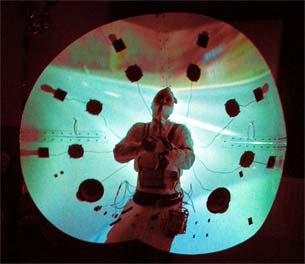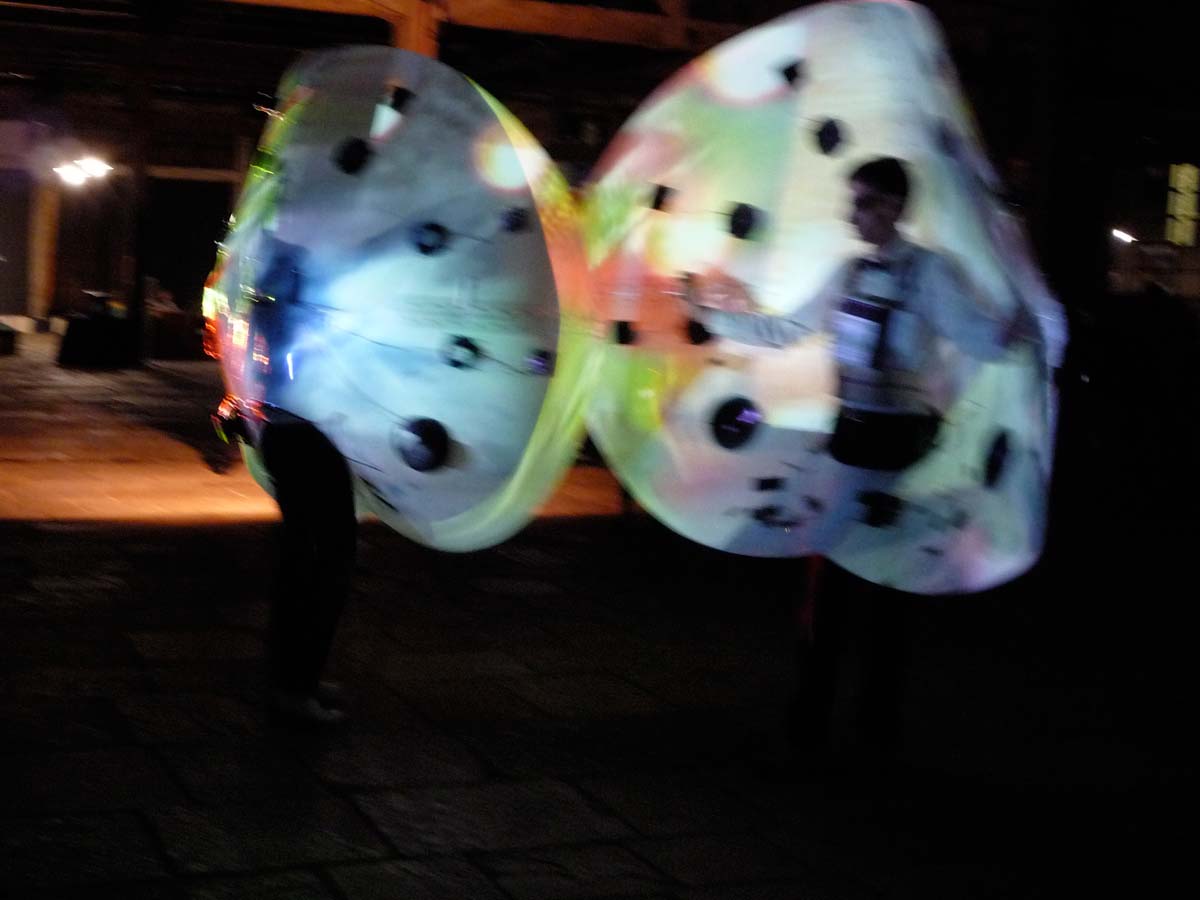White polycarbonate (plexiglass) costume with 16 loudspeakers and sampler. Used for audio-visual performances.
As Audio Peacock the performer amplifies and alters his voice using a built-in microphone, sampler and digital filter mechanism. The Video Peacock is a nocturnal version of the Audio Peacock. Here the polycarbonate dish becomes a mobile projection screen. Sound and light are emitted from the same surface, and can interact. The Video Peacock is an urban multi-media phenomenon. It roves over a much smaller area than the Audio Peacock so that it can catch the light. Live visualizations (movies, pictures, texts, computer-enhanced images and closed circuit camera views) are “beamed“ onto the performers as they play their sounds.
In a standard “CyberBird” performance the voice is transmitted to an oscilloscope, the images of his voice (dancing pictogram patterns) are then projected onto the costume. Thus the sound can be seen as well as heard.
In 2009 during the CYBERBIRDS performance at the Hohenrausch Festival/ Rostock
The sound of an Audio Ballerina — without her audio tutu– but equipped with a light-to-frequency-sensor and transmitter was amplified and visualized “live“ (as oscilloscope patterns and transmitted sounds) via two CyberBirds at her side.
In the new concept Stream-SCAPES live sounds and visualizations from the internet (movies, pictures, texts, blogs, computer-enhanced images and closed circuit camera views) are “beamed“ onto the Peacocks as a real-time mobile multimedia installation using live streaming program.
For example 4 Cyber-Birds are connected via live streaming audio/video to 4 skype-partners on a specific (contrasting) site in the world.
The 4 Peacocks play a live simultaneous “videoscape“ from the venue with real-time visuals, sounds and and actions.
The 4 CyberBirds are also choreographed into the site as a mobile installations: for example they can either line up like a landscape or place themselves on four sides like the walls of an imaginary room — or a “cyberspace”.
Video:



















